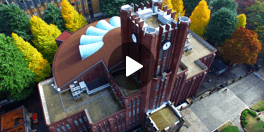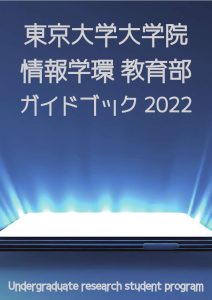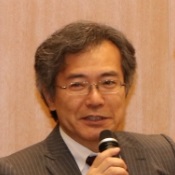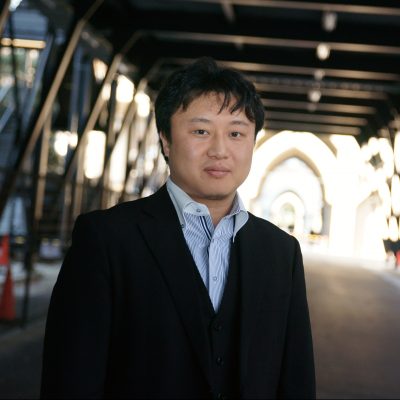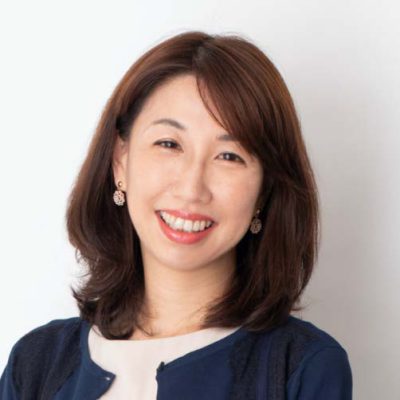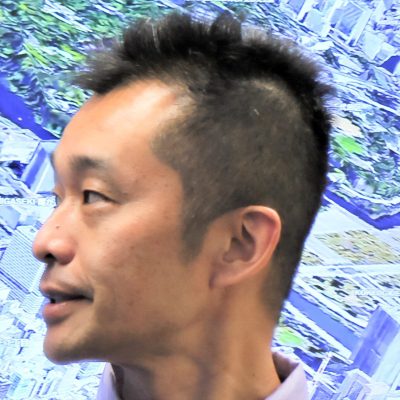おもに学部レベルの、異種混淆的で刺激的な学習の場A Stimulating Hybrid Learning Environment Focused on Undergraduate Studies
情報学環教育部とはなにか
情報学環教育部は、情報、メディア、コミュニケーション、ジャーナリズムについて学びたい人々のために、おもに学部レベルの教育を2年間にわたっておこなう、ユニークな教育組織です。講義は、各自が所属する学部の授業などと両立できるように、おおむね午後から夜間にかけて開講されています。
学部、研究科という「タテ糸」で成り立つ東京大学のなかに、情報というキーワードをめぐる教育研究を「ヨコ糸」で縫い合わせてできた情報学環。教育部は、その情報学環という斬新的な東大の組織の特性を活かした、魅力的な学習の場となっています。
情報学環教育部では、毎年、前年度後期に入学試験をおこない、一学年約30名の教育部研究生を選抜します。大学2年生以上であれば、東京大学の学生だけではなく他大学の学生、社会人も含めて受験をすることができます(4月以降大学2年生になる見込みの人を含みます。ただし4月以降に大学院生となる見込みの人は含みません)。受験資格の詳細は募集要項を参照してください。
The III’s Undergraduate Research Student Program is a unique two-year program designed mainly to meet the learning needs of undergraduate students wishing to study information, media, communications and journalism. Classes are held mainly in the afternoon and evening to avoid conflicts with classes in other departments, thus enabling a diverse range of students to participate.
The III was established in order to counteract the vertical division of the university into specialized departments by creating horizontal linkages between departments based on “information” as a keyword. The Undergraduate Student Research Program builds upon this innovative organizational aspect of the III to create an especially attractive learning environment.
Entrance examinations for this program are held during the Winter Semester. Approximately 30 students are admitted every year. Applications are accepted from a wide range of people, including students of other universities and people already in full-time employment, in addition to existing students in the University of Tokyo. All applicants must have completed at least one year of undergraduate studies or be expected to complete one year of undergraduate studies (and be continuing as second-year students) by the time of admission into the program. (However, those expecting to enter a graduate program the following academic year are not eligible to apply.) Full details of the entrance requirements are given in the “Guidelines for Applicants”.
沿革History
情報学環教育部の歴史は古く、その起源は、1929年(昭和4年)の文学部新聞研究室にまでさかのぼります。小さな組織だった新聞研究室は、戦後まもない1949年(昭和24年)に、文系の学際的研究組織である新聞研究所へと発展しました。
新聞研究所は、その名のとおり、新聞をはじめとするマスメディアが巻き起こす社会情報現象やコミュニケーション変容を体系的に研究することを目的として設立されましたが、同時に、マスメディアで働く記者などの実務家を育成することも目的としていました。
全国の大学組織の中でここにしかないユニークな制度であり、学生の自治を重んじ、教員や同窓生も交えて自由闊達に議論をする学習の場として発展してきました。
1992年(平成4年)、新聞研究所は社会情報研究所として改組され、マスメディアに限定しない、情報に関わるあらゆる社会現象の研究を進めていくことになりました。それに伴って教育部のカリキュラムも改定されました。
2004年(平成16年)には、社会情報研究所が大学院情報学環と合併して発展的に解消し、教育部はそれまでの伝統を脈々と引き継ぎながら、文理融合型の教育活動を進めてきました。2012年年度(平成24年度)からは、混迷する時代状況や大学を取りまく内外情勢の変化に対応するかたちで改革をおこないました。
このような時代の変化のなかで、自律的で自由闊達な学習の場として情報学環教育部の意義はますます深まっているといえます。
The program has a long history dating back to the foundation of the Department of Journalism Studies in the Faculty of Letters in 1929. In 1949, this department was expanded and developed into a major organization known as the Institute of Journalism and Communication Studies.
The main purpose of the Institute of Journalism and Communication Studies was to conduct systematic research on social aspects of the mass media and the transformation of communications. At the same time, it also sought to provide training for journalists and other professionals pursuing careers in the mass media.
As a unique academic institution in Japan, the Institute of Journalism and Communication Studies became a special place of learning where free debate took place among students, faculty and alumni in an environment characterized by a high level of student self-governance.
In 1992, the institute was renamed as the Institute of Socio-information and Communication Studies (ISICS) and embarked on a new course of development focusing on the study of social aspects of information, not confined only to the mass media. The curriculum of the Undergraduate Research Student Program was also renewed at this time.
In 2004, ISICS merged with the III. The Undergraduate Research Program continued its development, becoming an interdisciplinary program bringing together the humanities, social sciences and natural sciences, while drawing on its own long tradition. A further renewal of the program is scheduled for the academic year of 2012 in response to the challenges of the current era and conditions surrounding the university.
Current conditions have given renewed meaning and importance to the Undergraduate Research Student Program as an autonomous and lively learning environment.
4つの領域Four Fields of Study
新聞研究所設立以来、情報学環教育部は、情報社会やメディア環境の変化のなかで、その守備範囲を広げてきました。現在、学際的、文理越境的、社学連携的な環境のなかで、おもに次の4つの基礎的素養を身につけることができます。
・メディアとジャーナリズムについて学ぶ「メディア・ジャーナリズム」領域
・情報産業の構造や仕組みについて学ぶ「情報産業」領域
・情報社会の歴史や現状について学ぶ「情報社会」領域
・情報と技術の関わりについて学ぶ「情報技術」領域
Since its foundation, the program has evolved and expanded its scope in response to the transformations of information society and the media environment. It now covers four areas of study, as follows:
・ Media and Journalism: media and journalism studies
・ Information Industries: study of the structure and operations of the information industries
・ Information Society: study of the history and current conditions of information society
・ Information Technology: study of the relation between information and technology
情報学環教育部のユニークなポイントThe Uniqueness of the Undergraduate Research Student Program
情報学環教育部のユニークなポイントは、次のようにまとめることができます。
・文理越境的、かつ実践的で学術的な授業を受けることができます。講義、文献購読、研究指導、実験実習など複数の授業形式を立体的に組み合わせた教育プログラムがあります。
・実務、学問における第一線の講師陣がそろっています。
・東京大学の学生はもとより、他大学の学生、社会人なども参加できる、異種混淆的で刺激的な学習の場です。多様な学生の履修しやすいよう、開講時間、手段などに工夫を施してあります。
・研究生の自律的な学習、表現、研究活動を尊重する伝統があります。
・半世紀を超える同窓生の伝統があり、ジャーナリズム、マスメディア、ICT業界とのつながりが深まります。
The III’s Undergraduate Research Student Program has the following unique points:
・ Classes cover topics in both the natural sciences and the humanities/social sciences and include learning through practical activities. The educational program combines various different lesson formats, including lectures, readings, research supervision, and practical workshops/seminars.
・ Classes are taught by leading academic researchers and experts with distinguished experience in various professions.
・ The learning environment is hybrid and stimulating thanks to an admissions policy open to students from the University of Tokyo and other universities, and people who have already embarked on professional careers. Various efforts (including the avoidance of class scheduling conflicts) are made to facilitate participation by a diverse range of students.
・ There is a strong tradition of respect for student autonomy, free expression and research activities.
・ The program is supported by a long tradition (over half a century) of alumni with close connections to journalism, mass media and ICT industries.
情報学環教育部自治会作成ガイドブックThe guidebook produced by the URSP Student's Association
コース担当教員Faculty Who Teach in This Course/Program
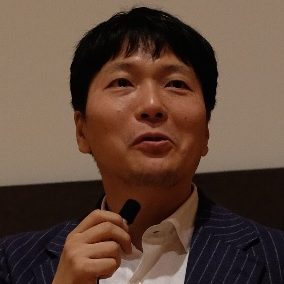
上條 俊介KAMIJO, Shunsuke
応用マルチメディア情報媒介システム処理, 高度交通システム・人物セキュリティ・蛋白質工学Applied Multimedia Information Processing, Intelligent Transportation Systems・Pedestrian Security, Protein Engineering
Profile Lab Website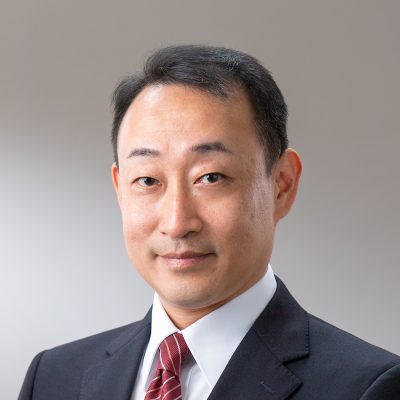
苗村 健NAEMURA, Takeshi
現実拡張・対話設計・創造支援Augmented Reality, Interaction Design and Creativity Support
Profile Lab Website- =基幹・流動
- =学内兼担・過程担当
- =特任・非常勤

